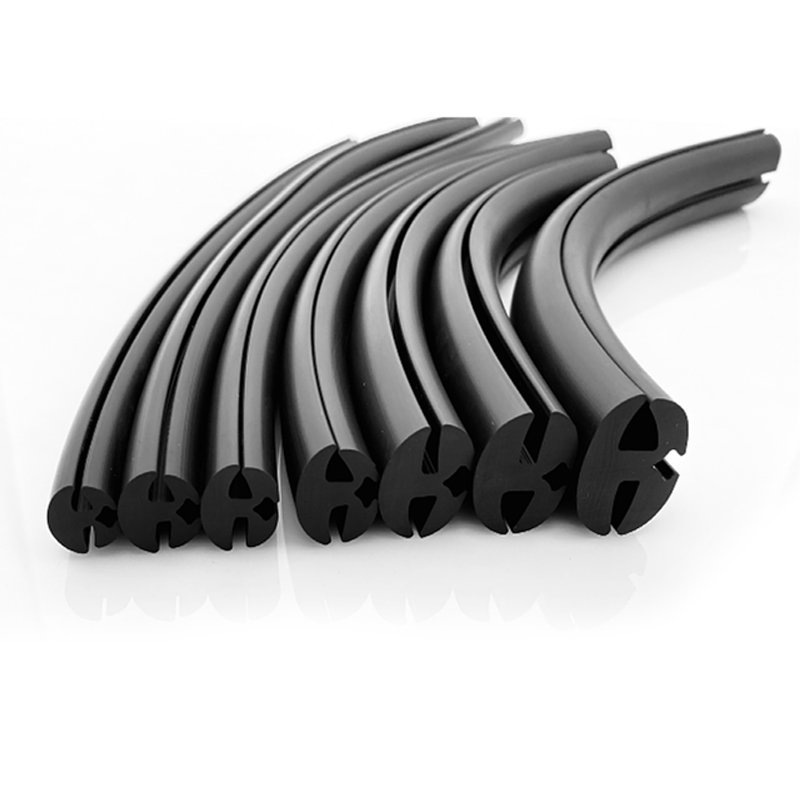Waterproof rubber seals are utilized in a wide range of applications where a watertight or moisture-resistant seal is required.
Here are some common applications where waterproof rubber seals are used:
Doors and Windows: Waterproof rubber seals are commonly employed in doors and windows to prevent water, drafts, and moisture from entering the building. They are used in various types of doors and windows, including residential, commercial, and industrial applications.
Automotive Industry: Rubber seals play a critical role in the automotive industry to ensure a watertight seal in various components. They are used in doors, windows, sunroofs, trunks, hoods, and other areas to prevent water, dust, and noise intrusion.
Plumbing and Pipe Connections: Waterproof rubber seals are utilized in plumbing applications to create a tight seal between pipes, fittings, and connectors. They help prevent leaks in plumbing systems and ensure the integrity of joints and connections.
Electrical Enclosures: Rubber seals are used in electrical enclosures, junction boxes, and control panels to provide protection against moisture, dust, and environmental contaminants. They help maintain the integrity of electrical connections and prevent the entry of water that could cause damage or electrical hazards.
Outdoor Equipment and Enclosures: Waterproof rubber seals find application in outdoor equipment and enclosures, such as outdoor cabinets, electronic enclosures, or outdoor lighting fixtures. They provide protection against water, dust, and other environmental elements to maintain the performance and longevity of the equipment.
Marine and Maritime Applications: Given their excellent resistance to water and moisture, rubber seals are extensively used in marine and maritime applications. They are utilized in boat hatches, windows, ports, and other marine equipment to ensure watertight seals and prevent water ingress.
HVAC Systems: Rubber seals are utilized in heating, ventilation, and air conditioning (HVAC) systems to prevent air and water leaks. They are used in ductwork, air handlers, vents, and HVAC unit connections to maintain efficient and reliable operation.
Food and Beverage Industry: Waterproof rubber seals are employed in the food and beverage industry to maintain hygienic conditions and prevent contamination. waterproof rubber seal They are used in sealing equipment, processing machinery, storage containers, and packaging systems to ensure airtight and moisture-resistant seals.
Medical and Pharmaceutical Applications: Rubber seals are utilized in medical and pharmaceutical equipment and devices where moisture resistance and a sterile seal are crucial. They are used in medical devices, laboratory equipment, pharmaceutical packaging, and drug delivery systems.
Industrial Equipment and Machinery: Waterproof rubber seals find application in various industrial equipment and machinery, including pumps, valves, compressors, hydraulic systems, and industrial enclosures. They are used to prevent leaks, maintain pressure, and protect against environmental elements.
These are just a few examples of the many applications where waterproof rubber seals are commonly used. The versatility, durability, and moisture-resistant properties of rubber seals make them essential components in numerous industries and applications.
Are there any specific maintenance requirements for waterproof rubber seals?
While waterproof rubber seals are designed to be durable and resistant to moisture, they still require regular maintenance to ensure optimal performance and longevity.
Here are some specific maintenance requirements for waterproof rubber seals:
Cleaning: Regularly clean the rubber seals to remove dirt, debris, and any substances that may accumulate on the surface. Use a mild soap or rubber-safe cleaning solution and a soft cloth or brush to gently clean the seals. Avoid using harsh chemicals or abrasive materials that can damage the rubber.
Inspections: Periodically inspect the rubber seals for signs of wear, damage, or degradation. Look for cracks, tears, brittleness, or any other visible signs of deterioration. Pay attention to areas where the seal interfaces with other surfaces or undergoes repetitive movement, as these are common areas of potential wear.
Lubrication: Some rubber seals may benefit from lubrication to maintain their flexibility and sealing properties. Check the manufacturer’s recommendations or consult with the supplier to determine if lubrication is necessary and what type of lubricant is suitable. Apply the lubricant sparingly and according to the provided instructions.
Preventive Measures: Take preventive measures to protect the rubber seals from excessive exposure to damaging elements. For outdoor applications, consider using protective coatings or treatments that offer UV resistance and help prevent degradation from sunlight exposure. In extreme temperatures, ensure that the seals are compatible with the expected temperature range to prevent cracking or hardening.
Replacement: If you observe significant damage, deterioration, or loss of sealing effectiveness, it may be necessary to replace the rubber seals. Follow the manufacturer’s recommendations regarding the lifespan of the seals and their replacement intervals. Promptly replace seals that are no longer providing an effective seal or are compromising the performance of the application.
Environmental Considerations: Consider the environmental conditions in which the rubber seals are installed. For example, in marine or coastal environments, where exposure to saltwater or salt air is common, additional care may be required. Regular rinsing with fresh water and applying appropriate protective coatings can help mitigate the effects of salt corrosion.
Documentation and Tracking: Maintain records of maintenance activities, inspections, and seal replacements. Documenting the maintenance history will help track the performance and lifespan of the rubber seals and facilitate proactive maintenance planning.
It’s important to note that specific maintenance requirements may vary depending on the type of rubber seal, the application, and the manufacturer’s recommendations. Always consult the manufacturer’s documentation and guidelines for the specific maintenance requirements of the rubber seals used in your application.
By following these maintenance practices, you can help extend the lifespan and optimize the performance of waterproof rubber seals, ensuring their continued effectiveness in providing a watertight seal.
